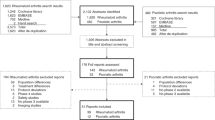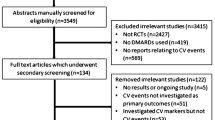Abstract
The identification of subgroups of patients from randomized clinical trials that are of specific interest for guiding clinical decisions can be an attractive idea; however, since such trials are designed for the comparison of groups of patients, performing subgroup analyses can result in misinterpretation of the data. Such analyses must, therefore, be performed and evaluated with caution: these should be pre-planned and included in the design of a suitably powered trial. Data obtained should be analyzed using formal statistical tests of interaction on proper subgroups rather than improper subgroups of patients, the results obtained should be delineated carefully, and details of how these analyses were performed, and how the data should be interpreted, should be reported in the trial paper. The caveats associated with this approach, such as the occurrence of false positive or false negative effects, chance differences in observed effects, lack of power to perform the analysis, floor or ceiling effects, issues relating to multiple statistical testing, and over-reporting and under-reporting are discussed in this review. Subgroup analyses can, however, provide valuable, albeit predominantly exploratory, information on which to base clinical decisions if they are performed in accordance with recommendations and guidelines, and do, therefore, have a legitimate place in rheumatology clinical trials.
Key Points
-
Subgroup analyses do have a place in the interpretation of data from randomized controlled trials in the field of rheumatology, but there are many pitfalls associated with this approach
-
Specific guidelines as to how to perform these analyses should be followed to ensure accurate conclusions are drawn
-
In subgroup analyses, only formal tests of interaction should be performed on proper subgroups that were defined in the design of the trial; subgroup-specific tests should not be carried out
-
Any lack of differential effect should be interpreted with caution unless the trial was specifically powered to include subgroup analyses
This is a preview of subscription content, access via your institution
Access options
Subscribe to this journal
Receive 12 print issues and online access
$209.00 per year
only $17.42 per issue
Buy this article
- Purchase on Springer Link
- Instant access to full article PDF
Prices may be subject to local taxes which are calculated during checkout

Similar content being viewed by others
References
Hernandez AV et al. (2005) Subgroup analysis and covariate adjustment in randomized clinical trials of traumatic brain injury: a systematic review. Neurosurgery 57: 1244–1253
Hernandez AV et al. (2006) Subgroup analyses in therapeutic cardiovascular clinical trials: are most of them misleading? Am Heart J 151: 257–264
Rothwell PM (2005) Treating individuals 2. Subgroup analysis in randomised controlled trials: importance, indications, and interpretation. Lancet 365: 176–186
Munneke M et al. (2005) Effect of a high-intensity weight-bearing exercise program on radiologic damage progression of the large joints in subgroups of patients with rheumatoid arthritis. Arthritis Rheum 53: 410–417
Yusuf S et al. (1991) Analysis and interpretation of treatment effects in subgroups of patients in randomized clinical trials. JAMA 266: 93–98
Moye LA and Deswal A (2001) Trials within trials: confirmatory subgroup analyses in controlled clinical experiments. Control Clin Trials 22: 605–619
Kanis JA et al. (2005) Risedronate decreases fracture risk in patients selected solely on the basis of prior vertebral fracture. Osteoporos Int 16: 475–482
White IR and Elbourne D (2005) Assessing subgroup effects with binary data: can the use of different effect measures lead to different conclusions? BMC Med Res Methodol 5: 15
Michel BA et al. (2005) Chondroitins 4 and 6 sulfate in osteoarthritis of the knee: a randomized, controlled trial. Arthritis Rheum 52: 779–786
Pocock SJ (1983) Clinical trials: a practical approach. 213–215. Chichester: John Wiley & sons
Bland JM and Altman D (1995) Multiple significance tests: the Bonferroni method. BMJ 310: 170
Schulz KF and Grimes DA (2005) Multiplicity in randomised trials II: subgroup and interim analyses. Lancet 365: 1657–1661
Braun J et al. (2006) Efficacy of sulfasalazine in patients with inflammatory back pain due to undifferentiated spondyloarthritis and early ankylosing spondylitis: a multicentre randomised controlled trial. Ann Rheum Dis 65: 1147–1153
Pocock SJ et al. (2002) Subgroup analysis, covariate adjustment and baseline comparisons in clinical trial reporting: current practice and problems. Stat Med 21: 2917–2930
Scott-Lennox JA et al. (2001) Stratification of flare intensity identifies placebo responders in a treatment efficacy trial of patients with osteoarthritis. Arthritis Rheum 44: 1599–1607
Assmann SF et al. (2000) Subgroup analysis and other (mis)uses of baseline data in clinical trials. Lancet 355: 1064–1069
Chesnut III CH et al. (2004) Effects of oral ibandronate administered daily or intermittently on fracture risk in postmenopausal osteoporosis. J Bone Miner Res 19: 1241–1249
CONSORT statement [http://www.consort-statement.org/Statement/revisedstatement.htm#checklist] (Accessed 21 February 2007)
Oxman AD and Guyatt GH (1992) A consumer's guide to subgroup analyses. Ann Intern Med 116: 78–84
Brookes ST et al. (2001) Subgroup analyses in randomised controlled trials: quantifying the risks of false-positives and false-negatives. Heath Technol Assess 5: 1–56
Acknowledgements
I wish to thank the anonymous peer-reviewers for their helpful and constructive comments on a previous version of this manuscript.
Author information
Authors and Affiliations
Ethics declarations
Competing interests
The author declares no competing financial interests.
Rights and permissions
About this article
Cite this article
Guillemin, F. Primer: the fallacy of subgroup analysis. Nat Rev Rheumatol 3, 407–413 (2007). https://doi.org/10.1038/ncprheum0528
Received:
Accepted:
Issue Date:
DOI: https://doi.org/10.1038/ncprheum0528
This article is cited by
-
Association between magnetic field exposure and miscarriage risk is not supported by the data
Scientific Reports (2021)
-
Rheumatoid arthritis response to treatment across IgG1 allotype – anti-TNF incompatibility: a case-only study
Arthritis Research & Therapy (2015)
-
Randomized controlled trials versus rough set analysis: two competing approaches for evaluating clinical data
Theoretical Medicine and Bioethics (2014)
-
Challenges and Solutions to Pre- and Post-Randomization Subgroup Analyses
Current Cardiology Reports (2014)
-
Pre-referral rectal artesunate in severe malaria: flawed trial
Trials (2011)



